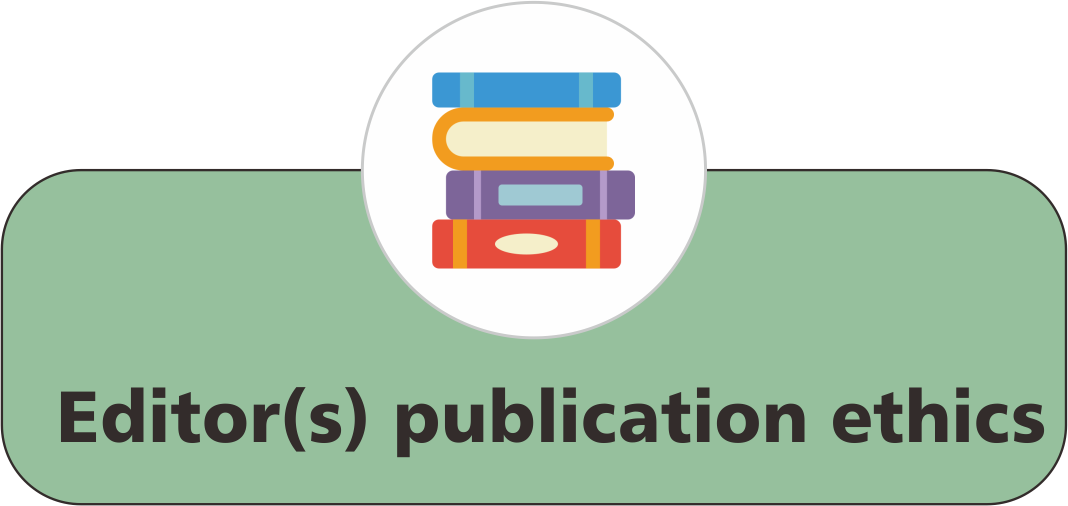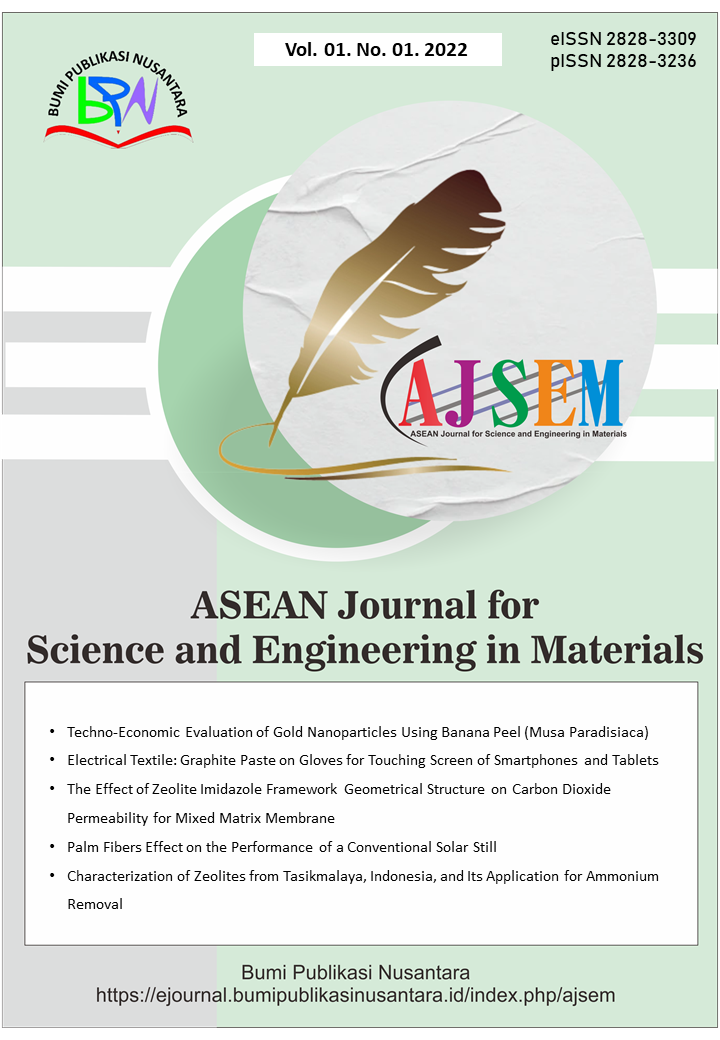Techno-Economic Analysis of Production Ecobrick from Plastic Waste to Support Sustainable Development Goals (SDGS)
 ), Martin Roestamy(2), R. Siti Pupu Fauziah(3), Rita Rahmawati(4), Ginung Pratidina(5), Irma Purnamasari(6), Saepudin Muhtar(7), Euis Salbiah(8),
), Martin Roestamy(2), R. Siti Pupu Fauziah(3), Rita Rahmawati(4), Ginung Pratidina(5), Irma Purnamasari(6), Saepudin Muhtar(7), Euis Salbiah(8),
(1) Universitas Djuanda
(2) Universitas Djuanda
(3) Universitas Djuanda
(4) Universitas Djuanda
(5) Universitas Djuanda
(6) Universitas Djuanda
(7) Universitas Djuanda
(8) Universitas Djuanda
 Corresponding Author
Corresponding Author
Abstract
Keywords
References
Adiyanto, O., Mohamad, E., and Jeefferie, A.R. (2022). Systematic review of plastic waste as eco-friendly aggregate for sustainable construction. International Journal of Sustainable Construction Engineering and Technology, 13(2), 243-257.
Akinwumi, I., Soladoye, O., Ajayi, V., and Epelle, P. (2022). Experimental insight into the containment of plastic waste in cement-stabilised soil as a road pavement layer material. Infrastructures, 7(12), 1-19.
Brunette, T., Carr, F., Graham-Jolly, A., and Griffiths, G. (2021). Reimagining plastics in the built environment: Ecobricks at the ridge, Cape Town. CTBUH Journal, 4, 44-49.
Edike, U.E., Aina, O., and Adeoye, A.B. (2022). Adoption of eco-bricks for housing: The case of Yelwa, Nigeria. African Journal of Science, Technology, Innovation and Development, 14(3), 801-812
Elia, S.H., Maharani, B.S., Yustia, I., Girsang, G.C.S., Nandiyanto, A.B.D., and Kurniawan, T. (2023). Techno-economic evaluation of hyaluronic acid production through extraction method using yellowfin tuna eyeball. ASEAN Journal of Science and Engineering, 3(1), 1-10.
Haque, M.S. (2019). Sustainable use of plastic brick from waste PET plastic bottle as building block in Rohingya refugee camp: a review. Environmental Science and Pollution Research, Springer, 26, 36163–36183.
Haque, M.S., and Islam, S. (2021). Effectiveness of waste plastic bottles as construction material in Rohingya displacement camps. Cleaner Engineering and Technology, 3, 1-10.
Jain, D.R., Mute, P.P., Dhawale, A.B., Bhandakkar, K.V., and Kedar, R.S. (2021). A review paper on eco-bricks. International Journal of Advances in Engineering and Management, 3, 1369-1378.
Karyono, Tri., Setiawan, T., and Permana, W.J. (2024). Augmented reality (AR) technology to stimulate creativity in a zero-waste lifestyle in converting plastic waste to art products to support sustainable development goals (SDGs). Journal of Engineering, 19(4), 1463-1486.
Khechekhouche, A., Karima, B., Eddine, K.S., and Sara, L. (2023). Thermal and mechanical shock testing of a brick wall and a polystyrene wall. ASEAN Journal of Science and Engineering, 3(1), 11-20.
Kristianto, A.H., and Widya, P.R., (2021). Sustainable development goals (SDGs) Implementation: Youth ecopreneurship intention in waste plastics management into valuable products in border areas. Ekonika: Jurnal Ekonomi Universitas Kadiri, 6(1), 84-99.
Kumari, S., Kaur, M., and Dhania, G. (2024). Management of plastic waste: A sustainable approach. Environmental Sustainability, 151, 151-167.
Maratussolihah, P., Rahmadianti, S., Tyas, K.P., Girsang, G.C.S., Nandiyanto, A.B.D., and Bilad, M.R. (2022). Techno-economic evaluation of gold nanoparticles using banana peel (Musa Paradisiaca). ASEAN Journal for Science and Engineering in Materials, 1(1), 1-12.
Mihai, F.C., Gündoğdu, S., Markley, L.A., Olivelli, A., Khan, F.R., and Claire, G. (2021). Plastic pollution, waste management issues, and circular economy opportunities in rural communities. Sustainability, 14(1), 1-48.
Nandiyanto, A.B.D., Ragadhita, R., and Fiandini, M. (2023). Interpretation of Fourier transform infrared spectra (FTIR): A practical approach in the polymer/plastic thermal decomposition. Indonesian Journal of Science and Technology, 8(1), 113-126.
Nurdiana, A., Astuti, L., Dewi, R.P., Ragadhita, R., Nandiyanto, A.B.D., and Kurniawan, T. (2022). Techno-economic analysis on the production of zinc sulfide nanoparticles by microwave irradiation method. ASEAN Journal of Science and Engineering, 2(2), 143-156
Pebrianti, M., and Salamah, F. (2021). Learning simple pyrolysis tools for turning plastic waste into fuel. Indonesian Journal of Multidiciplinary Research, 1(1), 99-102.
Rabello, L.G., and da Conceição Ribeiro, R.C. (2021). A novel vermiculite/vegetable polyurethane resin-composite for thermal insulation eco-brick production. Composites Part B: Engineering, 221, 109035.
Ragahita, R., and Nandiyanto, A.B.D. (2022). Computational bibliometric analysis on publication of techno-economic education. Indonesian Journal of Multidiciplinary Research, 2(1), 213-220.
Sarkingobir, Y., and Tukur, U. (2025). Plastic in water and its implications for human and biological systems. ASEAN Journal for Science and Engineering in Materials, 4(1), 1-12.
Setyani, Z.T., Athallah, N.A., and Rismayani, R. (2023). Demonstrating the goodie bag policy to the public as single-use packaging for plastic waste reduction on the impact on environment. ASEAN Journal of Community Service and Education, 2(2), 147-154.
Soegoto, E.S., Ramana, J.M., and Rafif, L.S. (2021). Designing an educational website regarding recycling of plastic waste into roads. ASEAN Journal of Science and Engineering Education, 2(1), 135-140.
Sridevi, V., Hamzah, H.T., Jweeg, M.J., Mohammed, M.N., Al-Zahiwat, M.M., Abdullah, T.A., and Abdullah, O.I. (2024). Microwave pyrolysis of agricultural and plastic wastes for production of hybrid biochar: For greener environment. Indonesian Journal of Science and Technology, 9(3), 791-820.
Syukri, D., and Fauziah, A. (2022). Socialization of the manufacture of eco-brick as a solution to management of plastic waste in Nagari Tanjung Betung, Pasaman. Andalusian International Journal of Social and Entrepreneurial Development, 2(02), 17-23.
Wahyudin, C., Apriliani, A., Ramdani, F.T., Pratidina, G., and Seran, G.G. (2023). A bibliometric analysis collaborative governance of plastic reduction through the transformation industry. Journal of Engineering Science and Technology, 18(4), 85–93.
Wangsupphaphol, A., Phichaisawat, S., and Lengkayan, R. (2024). Alternative energy options for a thai durian farm: Feasibility study and experiments for the combination of solar photovoltaics and repurposed lithium-ion batteries. Indonesian Journal of Science and Technology, 9(1), 125-144.
Wardani, F., and Khotimah, N. (2021). Making eco-bricks as a solution to environmental problems through empowering creative children: A case study in Baruga District, Kendari City. International Journal of Science and Society, 3(2), 214-221.
Article Metrics
Abstract View : 543 times
: 543 times Download : 757 times
Download : 757 times
Refbacks
- There are currently no refbacks.
Copyright (c) 2025 Bumi Publikasi Nusantara

This work is licensed under a Creative Commons Attribution-ShareAlike 4.0 International License.









